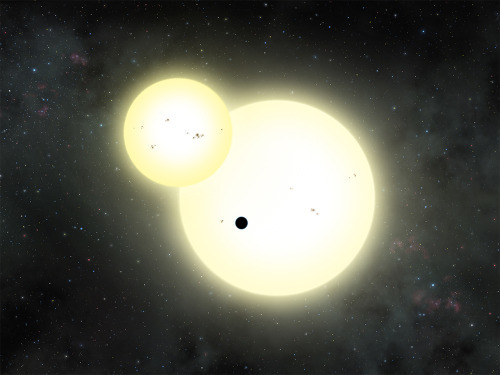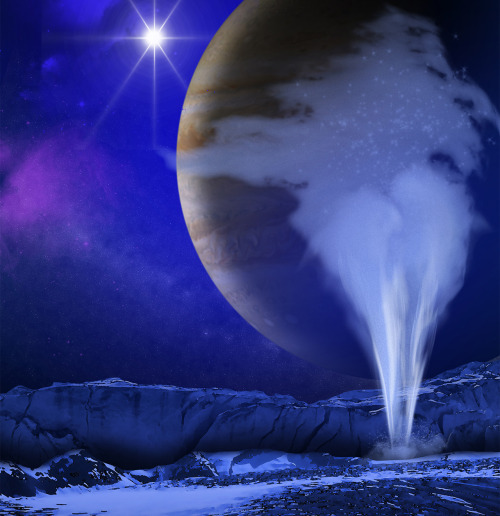Your gateway to endless inspiration
MayThe4th - Blog Posts
May the 4th Be With You
Happy May the 4th!
How many connections does America’s space program have with the fictional world of Star Wars? More than you might think…
Join us as we highlight a few of the real-world TIE-ins between us and Star Wars:
Space Laser


Lasers in space sounds like something straight out of Star Wars, but it’s also a reality for us. Our own GEDI (yes, like Jedi) instrument will launch later this year to the International Space Station.


GEDI stands for the Global Ecosystem Dynamics Investigation lidar. It will study the height of trees and forests, using three lasers split into eight tracks, and create a 3D map of forests around the planet.

With GEDI’s new tree maps, we’ll get a better understanding of how much carbon is stored in forests all over Earth, and how forests will be able to absorb increasing carbon dioxide in the atmosphere.
The Jedi knights may help protect a galaxy far, far away, but our GEDI will help us study and understand forest changes right here on Earth.

Another JEDI

There’s another Jedi in town and it happens to be orbiting the planet Jupiter. Our Juno spacecraft, which arrived at the gas giant in July 2016, has an instrument on board that goes by the name of JEDI - the Jupiter Energetic Particle Detector Instrument.
While it doesn’t use a light saber or channel “the force”, it does measure high-energy particles near Jupiter. Data collected with the JEDI instrument will help us understand how the energy of Jupiter’s rotation is being funneled into its atmosphere and magnetosphere.
Death Star Moon

We know what you’re thinking...”That’s no moon.” But actually, it is! This is a real picture taken by our Cassini spacecraft of Saturn’s moon Mimas. In this view taken on Cassini’s closest-ever flyby of Mimas, the large Herschel Crater dominates, making the moon look like the Death Star. Herschel Crater is 130 kilometers, or 80 miles, wide and covers most of the right of this image.
We Actually Do Have the Droids You’re Looking For

We have robots roving and exploring all over the solar system, but it's our own “R2” that's most likely to resonate with Star Wars fans. Robonaut 2, launched in 2011, is working along side humans on board the International Space Station, and may eventually help with spacewalks too dangerous for humans. Incidentally, an earlier version of Robonaut bore a strong “facial” resemblance to enigmatic bounty hunter Boba Fett.

Another "droid" seen on the space station was directly inspired by the saga. In 1999, then Massachusetts Institute of Technology (MIT) professor David Miller, showed the original 1977 Star Wars to his students on their first day of class. After the scene where hero Luke Skywalker learns lightsaber skills by sparring with a floating droid “remotes” on the Millennium Falcon, Miller stood up and pointed: "I want you to build me some of those."
The result was "SPHERES," or Synchronized Position Hold, Engage, Reorient, Experimental Satellites. Originally designed to test spacecraft rendezvous and docking maneuvers, the bowling-ball size mini-satellites can now be powered by smart phones.
A few more TIE ins...

When space shuttle Atlantis left the International Space Station after 2007’s STS-117 mission, it caught a view of the station that looked to some like a TIE fighter.

The "TIE-ins" go beyond casual resemblance to real engineering. We already use actual ion engines ("TIE" stands for "Twin Ion Engines") on spacecraft like Dawn, currently orbiting the dwarf planet Ceres. In fact, Dawn goes one better with three ion engines.
Want more Star Wars connections? Check out THIS Tumblr to learn about the REAL planets we’ve found outside our solar system that resemble planets from the movie.
Take THIS quiz to see if you know more about the Milky Way galaxy or a galaxy far, far away.
Make sure to follow us on Tumblr for your regular dose of space: http://nasa.tumblr.com.
It’s May the 4th: Are Star Wars Planets Real?
Look at what we’ve found so far.
Is your favorite Star Wars planet a desert world or an ice planet or a jungle moon?
It’s possible that your favorite planet exists right here in our galaxy. Astronomers have found over 3,700 planets around other stars, called “exoplanets.”
Some of these alien worlds could be very similar to arid Tatooine, watery Scarif and even frozen Hoth, according to our scientists.
Find out if your planet exists in a galaxy far, far away or all around you. And May the Fourth be with you!
Planets With Two Suns

From Luke Skywalker’s home world Tatooine, you can stand in the orange glow of a double sunset. The same could said for Kepler-16b, a cold gas giant roughly the size of Saturn, that orbits two stars. Kepler-16b was the Kepler telescope’s first discovery of a planet in a “circumbinary” orbit (that is, circling both stars, as opposed to just one, in a double star system).

The best part is that Tatooine aka Kepler-16b was just the first. It has family. A LOT of family. Half the stars in our galaxy are pairs, rather than single stars like our sun. If every star has at least one planet, that’s billions of worlds with two suns. Billions! Maybe waiting for life to be found on them.
Desert Worlds

Mars is a cold desert planet in our solar system, and we have plenty of examples of scorching hot planets in our galaxy (like Kepler-10b), which orbits its star in less than a day)! Scientists think that if there are other habitable planets in the galaxy, they’re more likely to be desert planets than ocean worlds. That’s because ocean worlds freeze when they’re too far from their star, or boil off their water if they’re too close, potentially making them unlivable. Perhaps, it’s not so weird that both Luke Skywalker and Rey grew up on planets that look a lot alike.
Ice Planets

An icy super-Earth named OGLE-2005-BLG-390Lb reminded scientists so much of the frozen Rebel base they nicknamed it “Hoth,” after its frozen temperature of minus 364 degrees Fahrenheit. Another Hoth-like planet was discovered in April 2017; an Earth-mass icy world orbiting its star at the same distance as Earth orbits the sun. But its star is so faint, the surface of OGLE-2016-BLG-1195Lb is probably colder than Pluto.

Forest worlds

Both the forest moon of Endor and Takodana, the home of Han Solo’s favorite cantina in “Force Awakens,” are green like our home planet. But astrobiologists think that plant life on other worlds could be red, black, or even rainbow-colored!
In February 2017, the Spitzer Space Telescope discovered seven Earth-sized planets in the same system, orbiting the tiny red star TRAPPIST-1.

The light from a red star, also known as an M dwarf, is dim and mostly in the infrared spectrum (as opposed to the visible spectrum we see with our sun). And that could mean plants with wildly different colors than what we’re used to seeing on Earth. Or, it could mean animals that see in the near-infrared.
What About Moons?
In Star Wars, Endor, the planet with the cute Ewoks, is actually a habitable moon of a gas giant. Now, we’re looking for life on the moons of our own gas giants. Saturn’s moon Enceladus or Jupiter’s moon Europa are ocean worlds that may well support life. Our Cassini spacecraft explored the Saturn system and its moons, before the mission ended in 2017. Watch the video and learn more about the missions’s findings.
And Beyond

The next few years will see the launch of a new generation of spacecraft to search for planets around other stars. Our TESS spacecraft launched in April 2018, and will discover new exoplanets by the end of the year. The James Webb Space Telescope is slated to launch in 2020. That’s one step closer to finding life.

You might want to take our ‘Star Wars: Fact or Fiction?’ quiz. Try it! Based on your score you may obtain the title of Padawan, Jedi Knight, or even Jedi Master!
You don’t need to visit a galaxy far, far away to find wondrous worlds. Just visit this one ... there’s plenty to see.
Discover more about exoplanets here: https://exoplanets.nasa.gov/
Make sure to follow us on Tumblr for your regular dose of space: http://nasa.tumblr.com